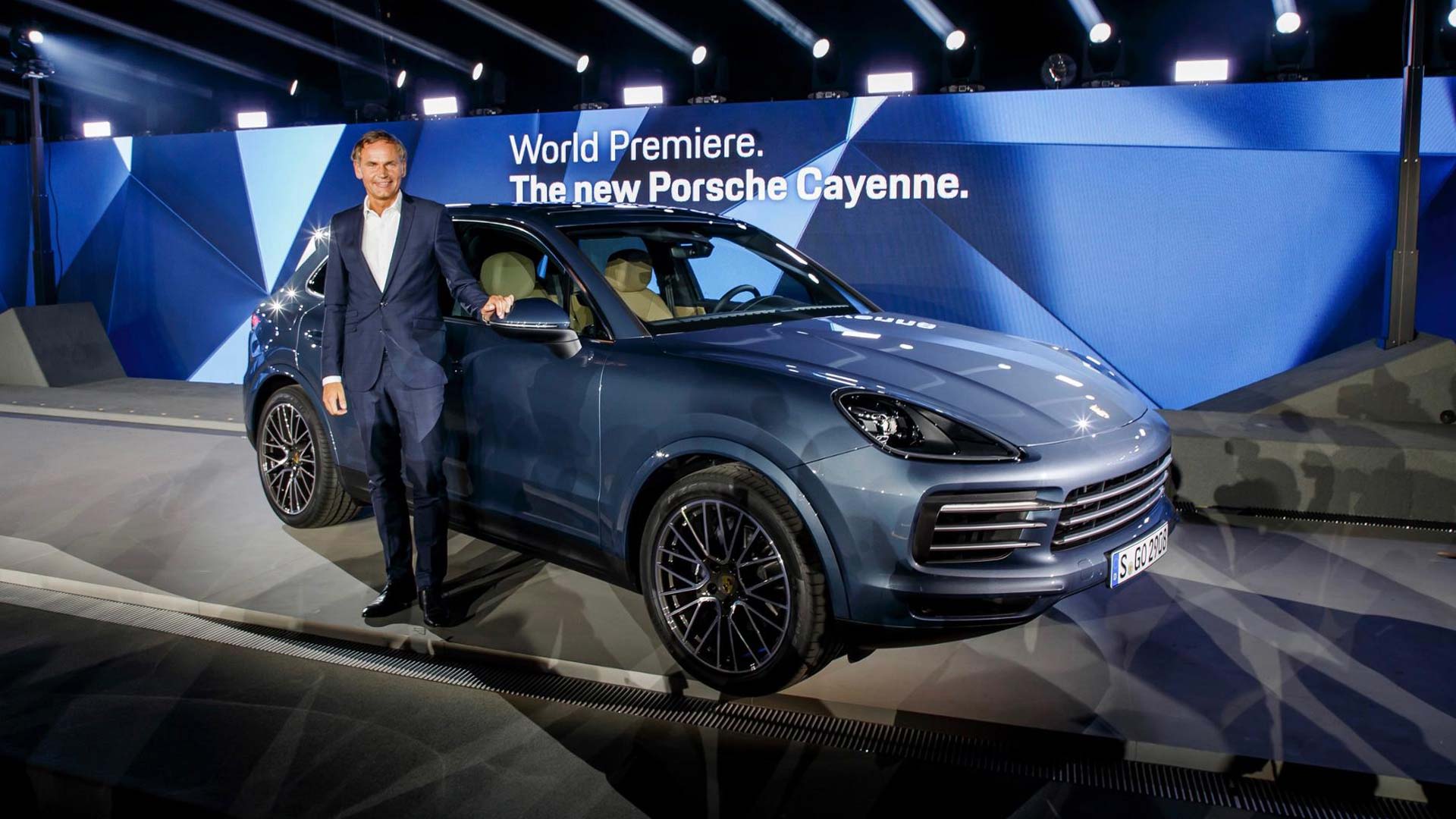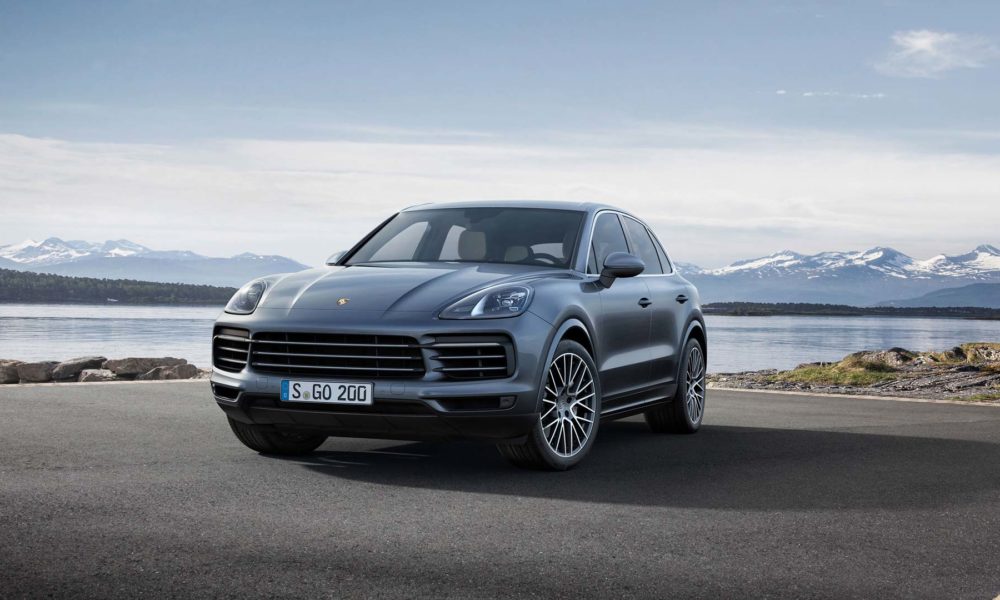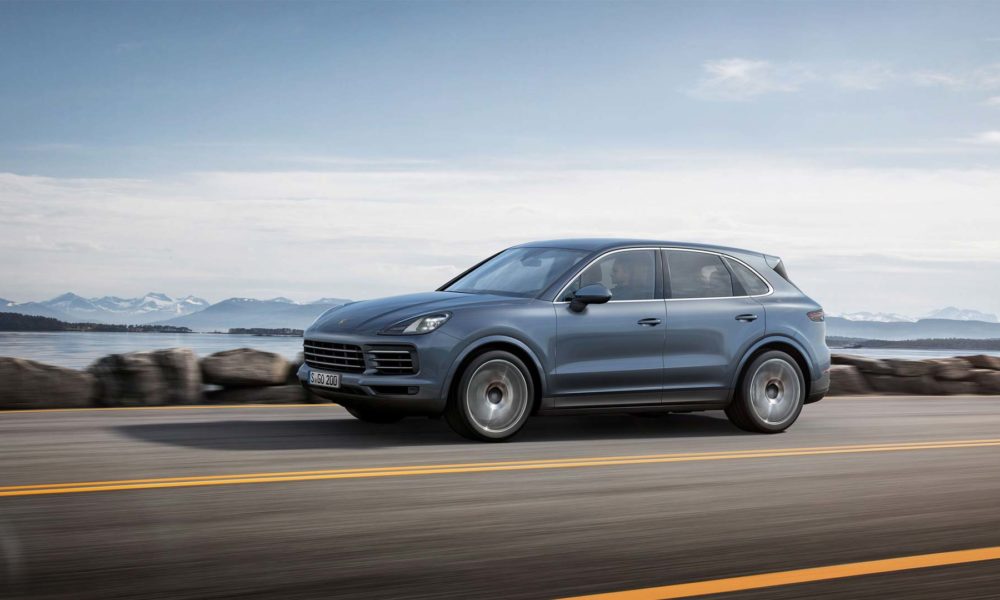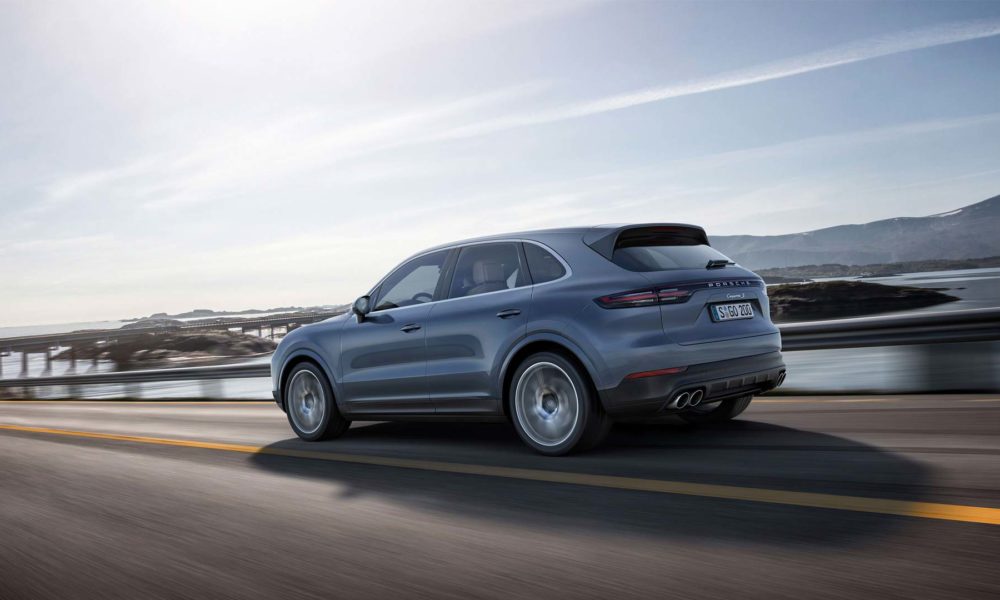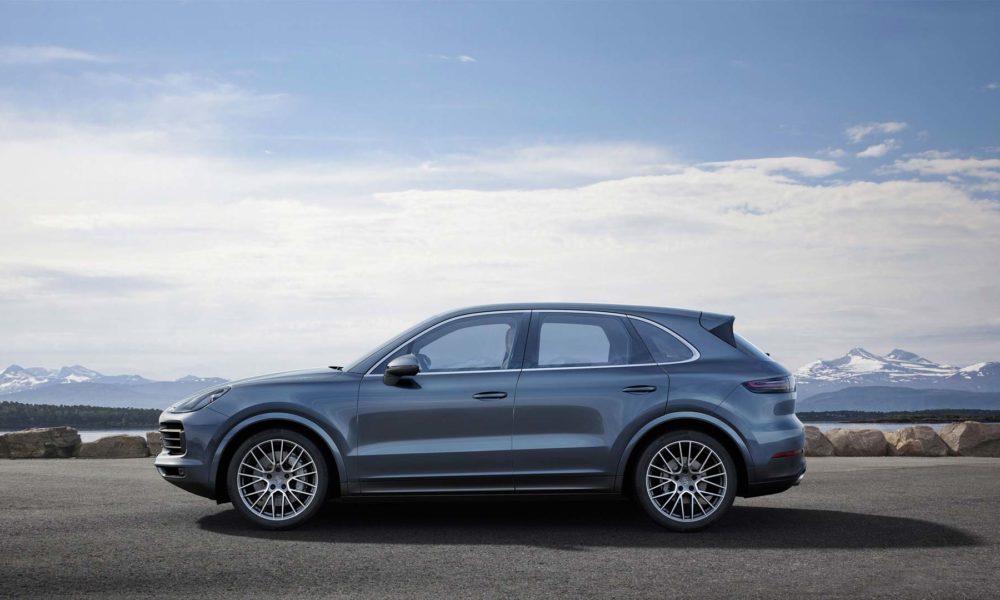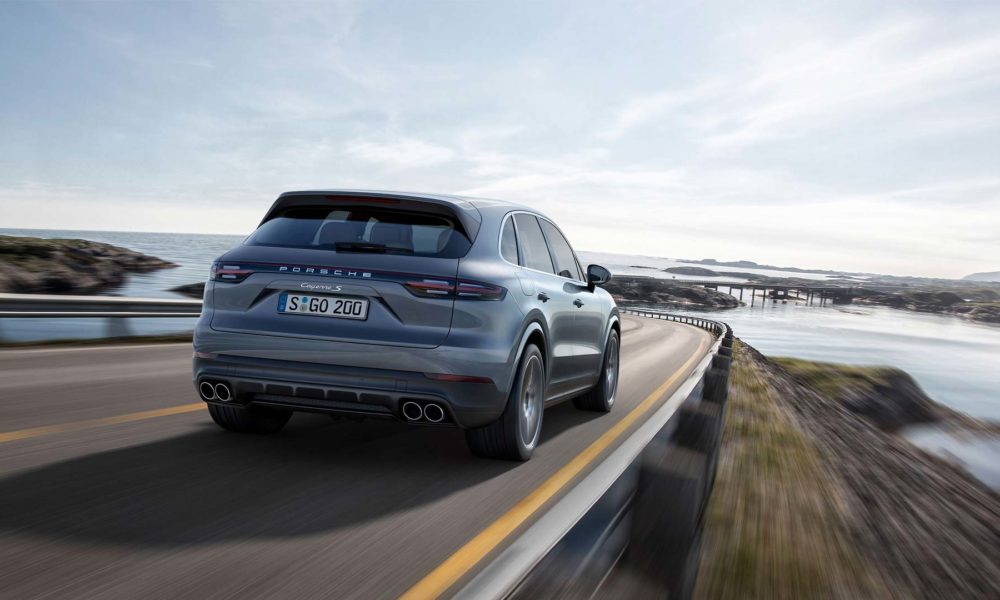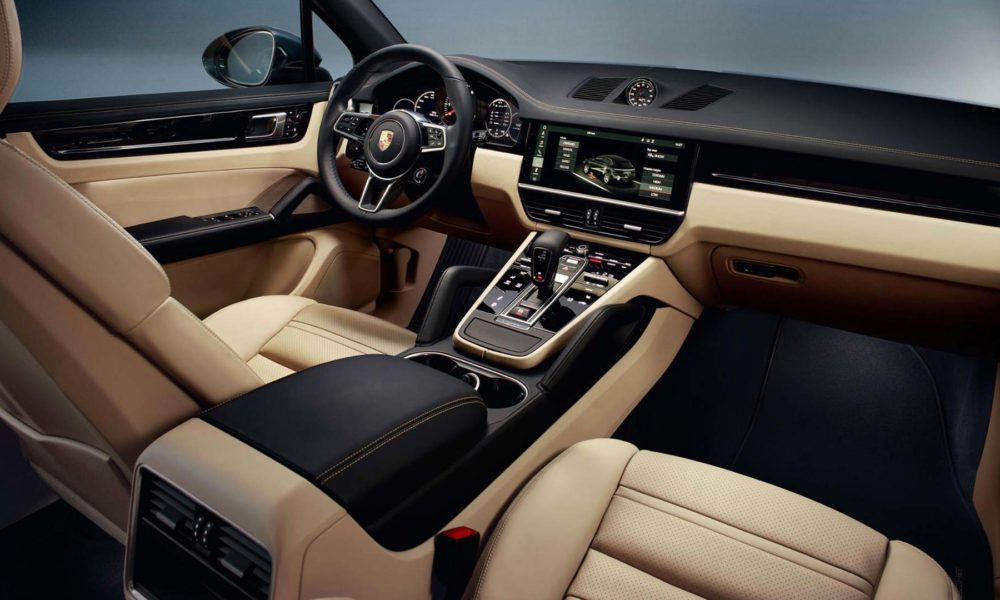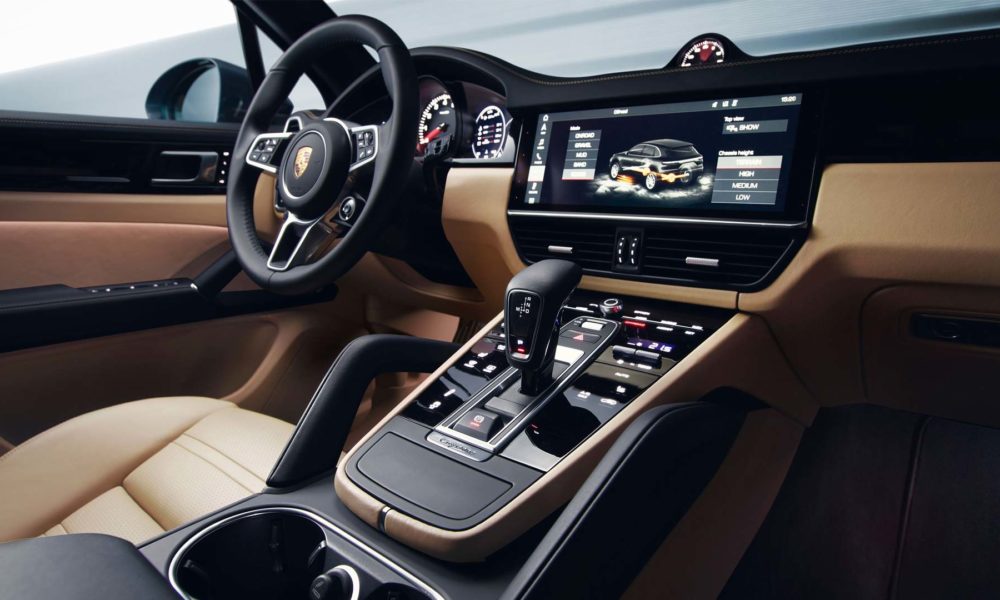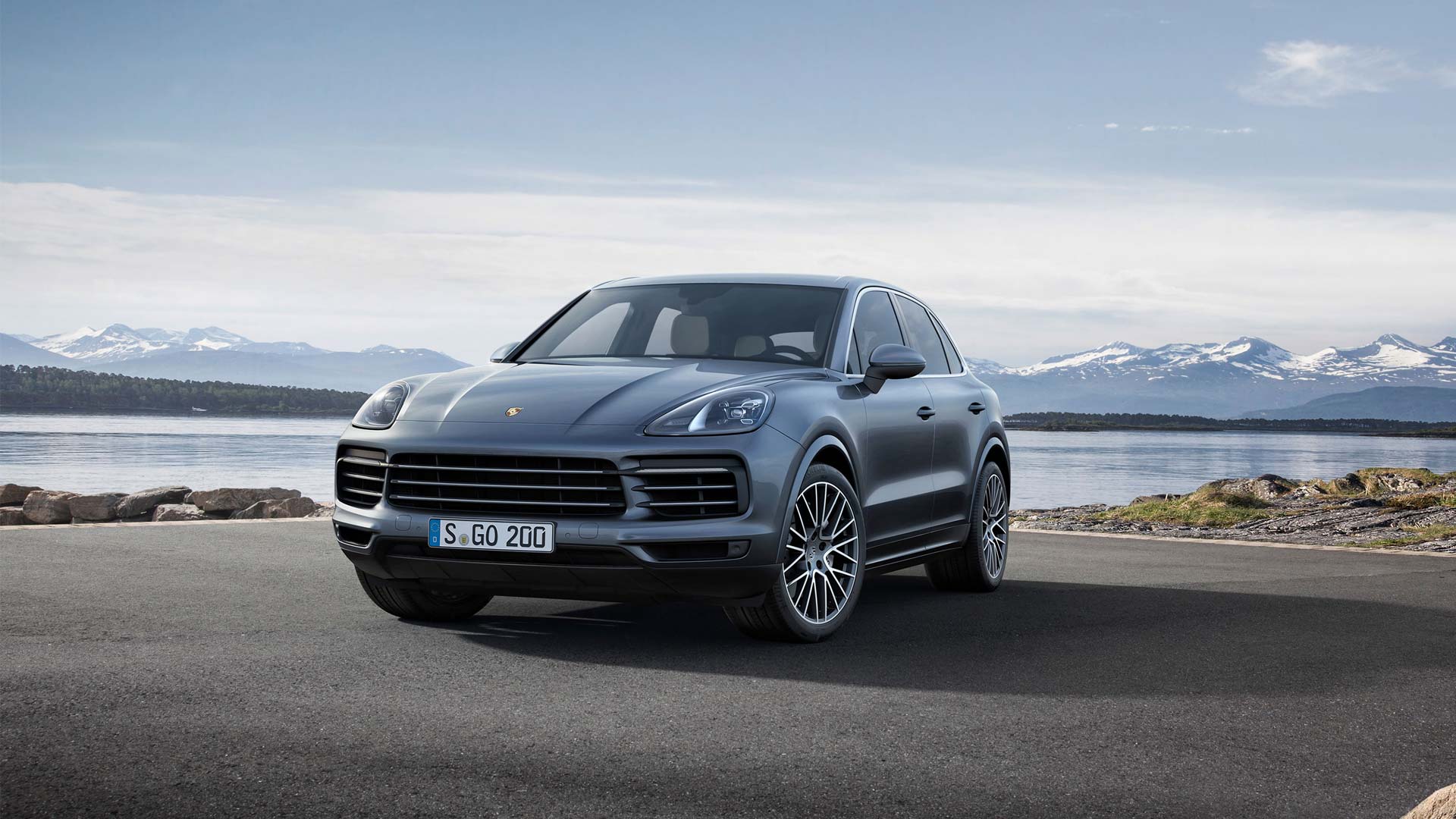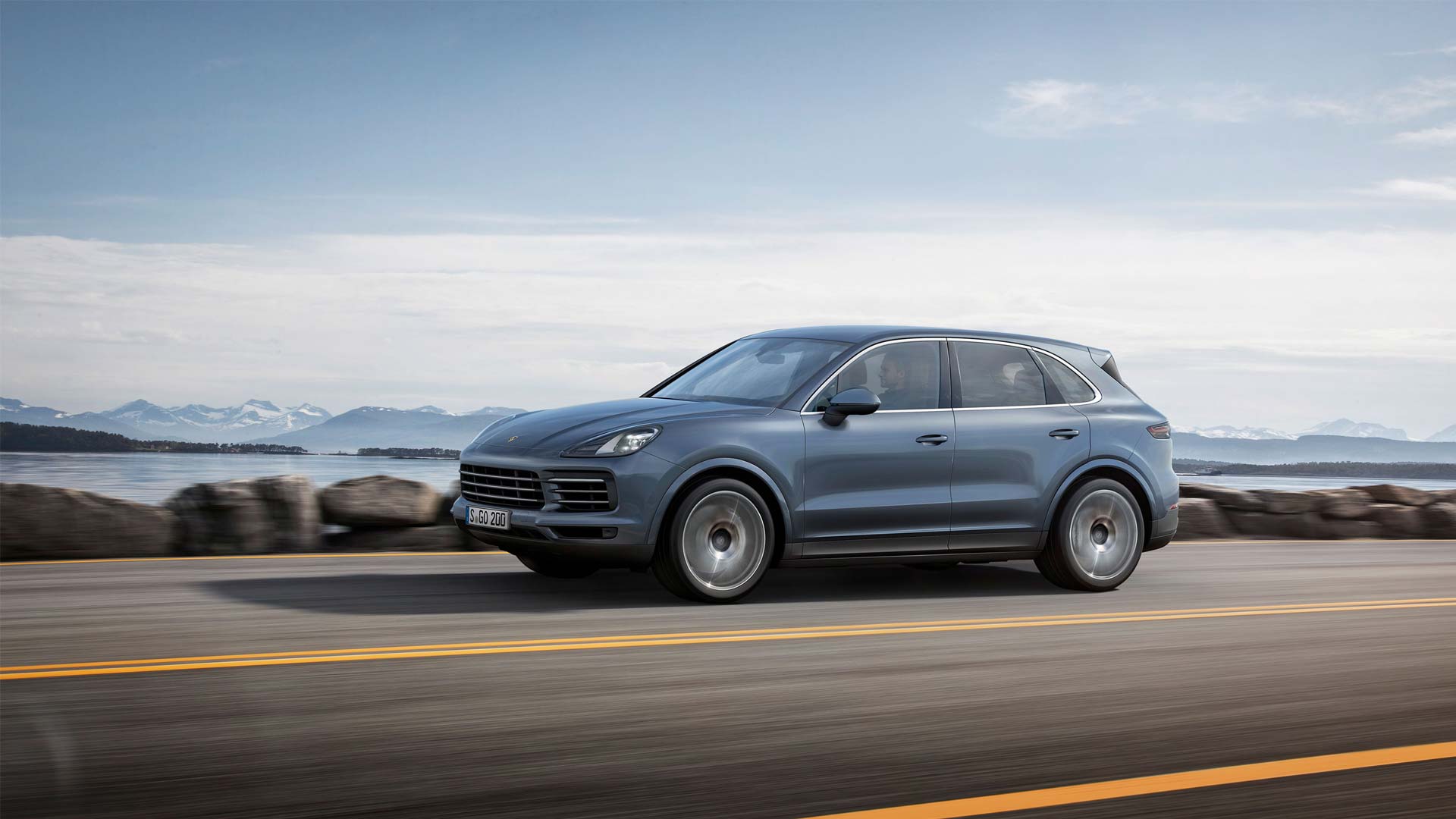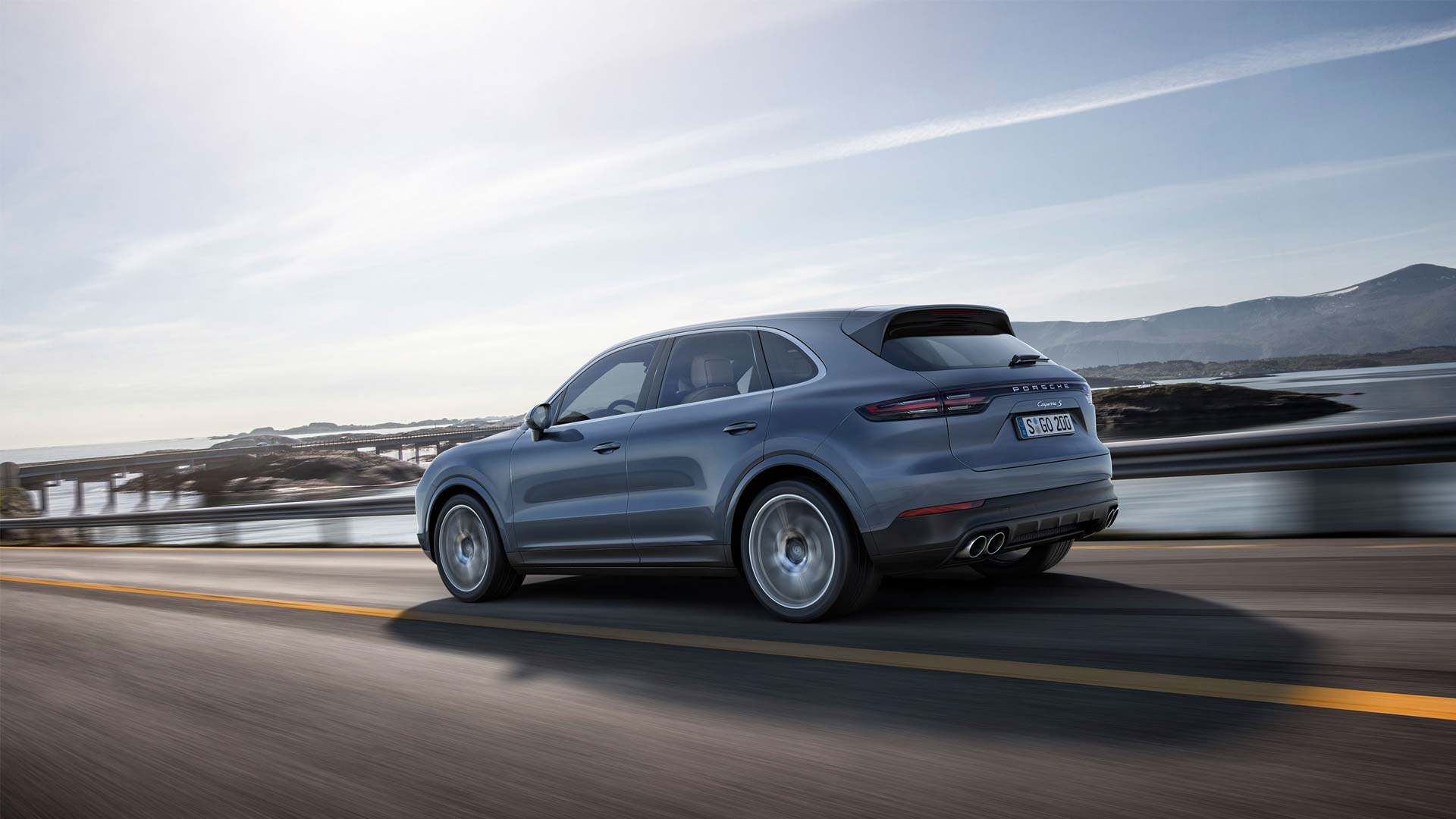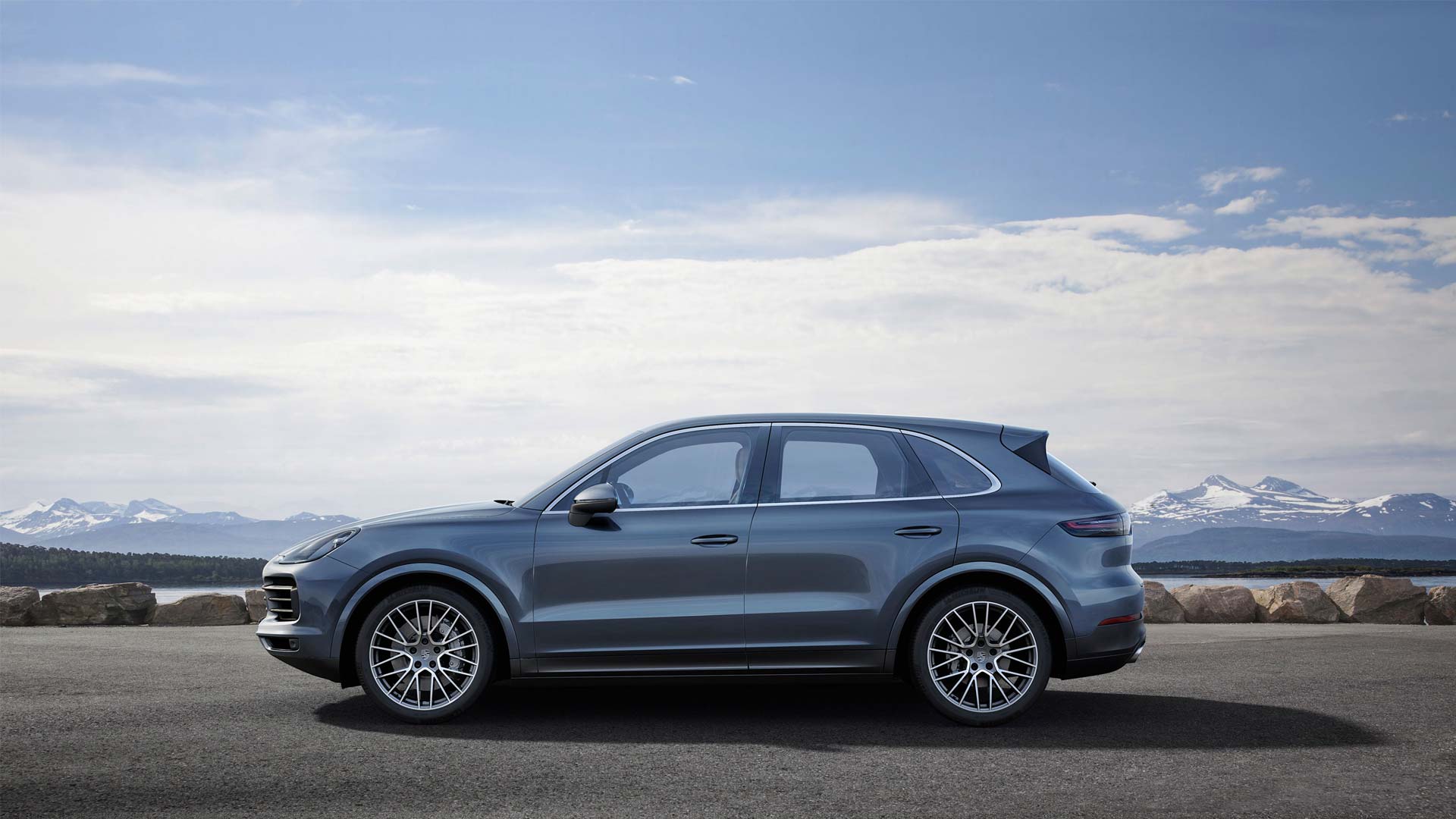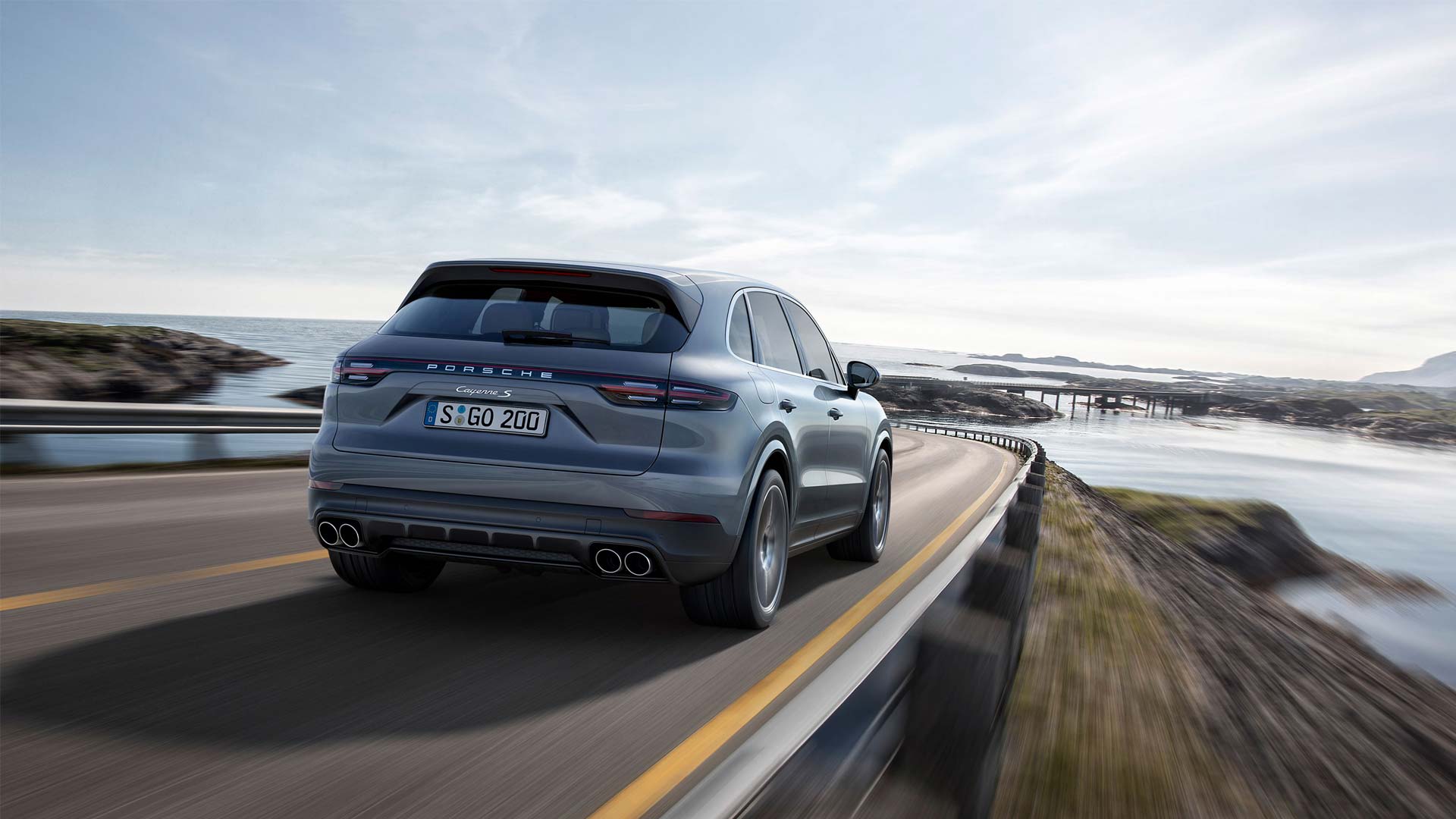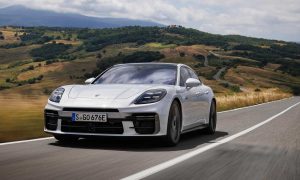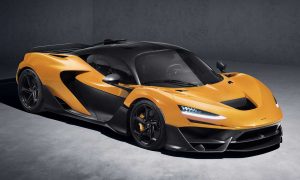After leaks and teasers, the third generation Porsche Cayenne has made its debut at its home in Stuttgart-Zuffenhausen. The Cayenne has been a successful model for Porsche ever since its launch in 2002, selling over 760,000 units.
The new model is 65 kg (143 lbs) lighter than before, thanks to the intelligent combination of alloy and steel. The exterior is made entirely of aluminium. The floorpan assembly, front section and almost all the chassis components are also made from alloy. The lithium-ion polymer starter battery alone accounts for a weight saving of 10 kg (22 lbs) over the outgoing model. In total, the weight of the Cayenne when empty has been reduced from 2,040 to 1,985 kg (4,376 lbs).
As for the design, the new Cayenne relies heavily on the 911 and of course, the new Panamera. The taillights are straight out of that aforementioned four-door sports saloon. There are a new set of LED headlamps at the front, which are standard for every Cayenne. Although the Porsche Dynamic Light System (PDLS) can be selected as an option, offering a variety of light modes such as cornering light and motorway light.
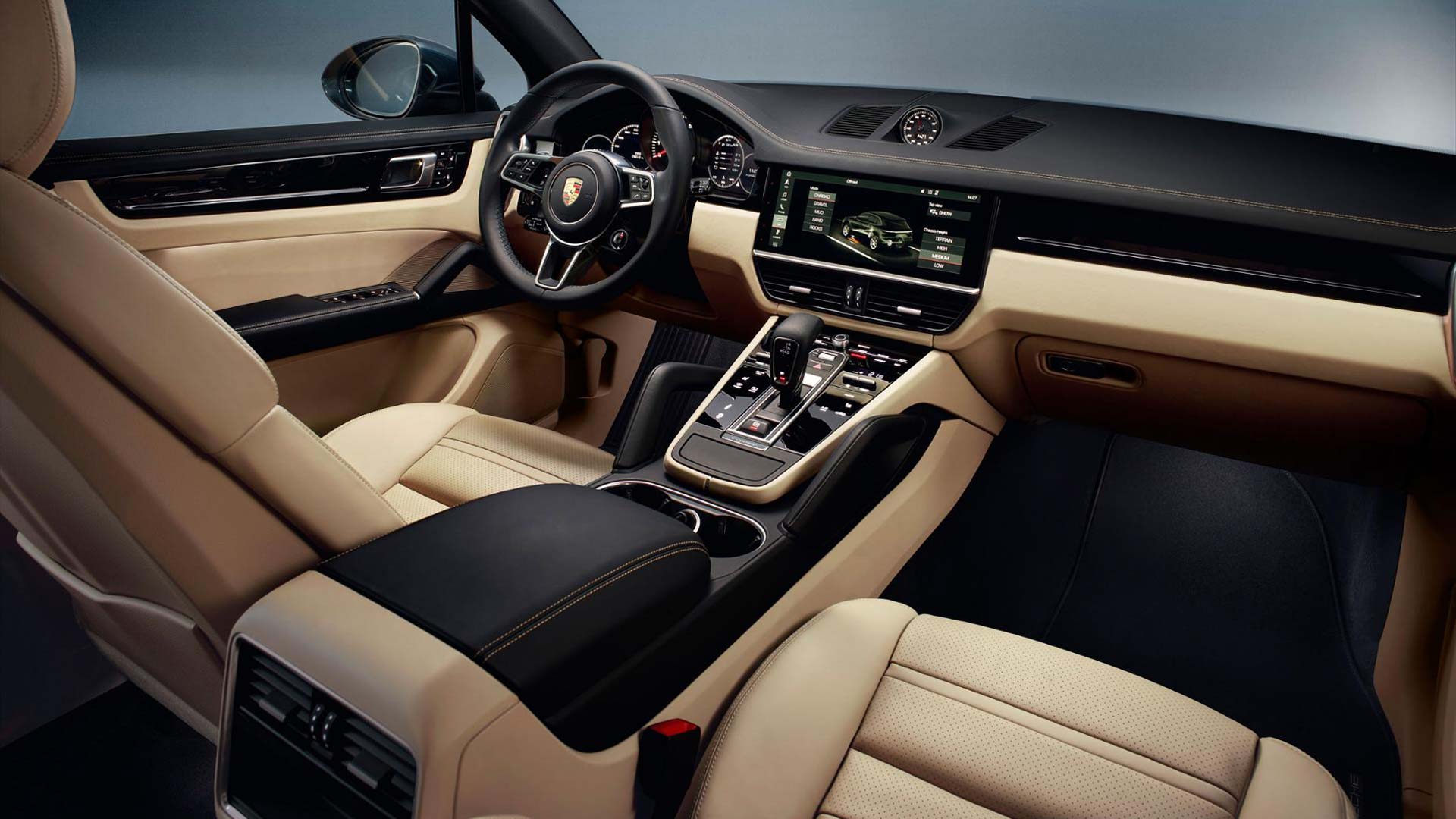
The interior layout too has a strong resemblance to the new Panamera. There is a 12.3-inch full-HD touchscreen from the latest generation of Porsche Communication Management (PCM). As for the instrument cluster, the analogue tachometer is flanked by two 7-inch full-HD displays, which display all other relevant driving data plus additional information selected using the multi-function steering wheel. There are Bose and Burmester surround sound systems to choose from.
Power
There’ll be two variants at launch – Cayenne and Cayenne S. The Cayenne gets 3.0-litre (2,995 cc) V6 turbo, with an output of 340 hp between 5300-6400 rpm and 450 Nm (332 lb-ft) of torque between 1340-5300 rpm. This model does 0-100 km/h (62 mph) in 6.2 seconds (5.9 with Sport Chrono), and the top speed is 245 km/h (152 mph). Unladen weight is 1,985 kg (4,376 lbs), and weight-to-power ratio is 5.8 kg/hp.
The Cayenne S on the other side gets 2.9-litre (2,894 cc) V6 bi-turbo, with an output of 440 hp between 5700-6600 rpm and 550 Nm (406 lb-ft) of torque between 1800-5500 rpm. 0-100 km/h (62 mph) acceleration happens in 5.2 seconds (4.9 with Sport Chrono), and top speed is 265 km/h (165 mph). This variant weighs 2,020 kg (4,453 lbs) unladen, and weight-to-power ratio is 4.6 kg/hp.
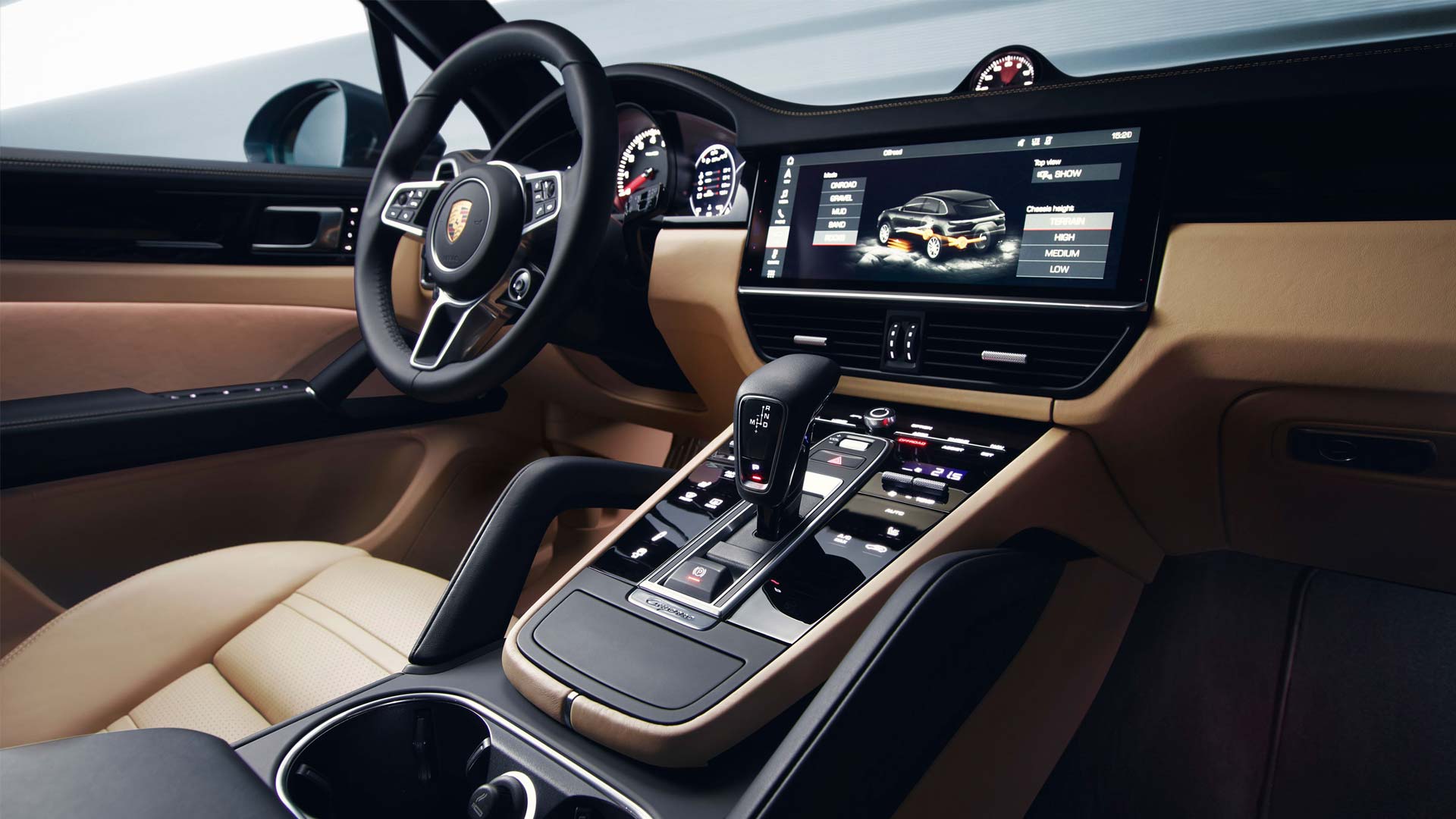
Transmission is an 8-speed Tiptronic S gearbox sending power to all four wheels. Porsche said that the gearbox now has shorter response times and sportier ratios in the lower gears enhancing both on-road performance and off-road capability. The fully variable Porsche Traction Management (PTM) distributes the driving force between the drive axles.
Apparently, the Sport Chrono Package has been redeveloped. Besides the Normal, Sport and Sport Plus driving modes, the driver can select an individually configurable mode. There’s a Sport Response button here as well, which activates the engine and transmission maps calibrated for maximum performance. The Sport Chrono Package also includes a separate PSM Sport mode, in which the driver can utilize the new Cayenne’s full driving dynamics.
As for the features, the Cayenne gets rear-axle steering for the first time. Also making it to the feature list is the Porsche 4D Chassis Control, three-chamber air suspension, Porsche Dynamic Chassis Control (PDCC) electronic roll stabilization system, and an LTE telephone module including a WiFi hotspot.
Porsche said that the new Cayenne combines three chassis concepts in one new design: sports car, off-roader and touring car. There are now ‘mixed tyres’, which is claimed to improve stability and driving dynamics at corners. Besides the standard 19-inch wheels, there is an option of up to 21 inches for the Cayenne.
Porsche Surface Coated Brake (PSCB)
Also new is this PSCB option, where the cast-iron disc is coated with tungsten-carbide. This finish is claimed to increase the friction values and reduce wear and dust. The brake calipers are painted white, while the surface of the discs develops a unique gloss level after bedding-in. The PSCB is only available in combination with the 21-inch wheels. The PCCB ceramic brakes remain the top system in the range.

Leave a Reply
Note: Comments that are unrelated to the post above get automatically filtered into the trash bin.
